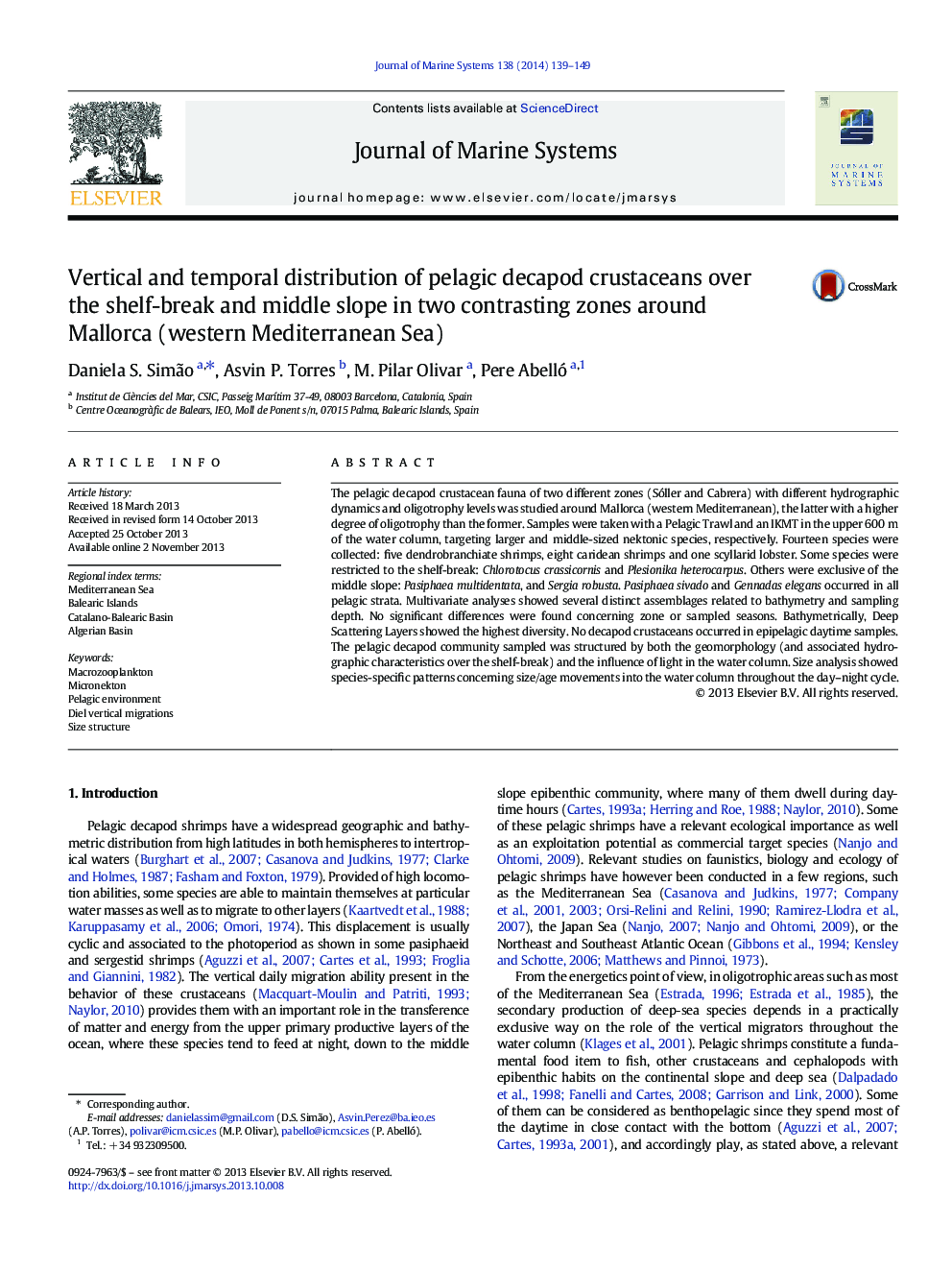| Article ID | Journal | Published Year | Pages | File Type |
|---|---|---|---|---|
| 4548006 | Journal of Marine Systems | 2014 | 11 Pages |
The pelagic decapod crustacean fauna of two different zones (Sóller and Cabrera) with different hydrographic dynamics and oligotrophy levels was studied around Mallorca (western Mediterranean), the latter with a higher degree of oligotrophy than the former. Samples were taken with a Pelagic Trawl and an IKMT in the upper 600 m of the water column, targeting larger and middle-sized nektonic species, respectively. Fourteen species were collected: five dendrobranchiate shrimps, eight caridean shrimps and one scyllarid lobster. Some species were restricted to the shelf-break: Chlorotocus crassicornis and Plesionika heterocarpus. Others were exclusive of the middle slope: Pasiphaea multidentata, and Sergia robusta. Pasiphaea sivado and Gennadas elegans occurred in all pelagic strata. Multivariate analyses showed several distinct assemblages related to bathymetry and sampling depth. No significant differences were found concerning zone or sampled seasons. Bathymetrically, Deep Scattering Layers showed the highest diversity. No decapod crustaceans occurred in epipelagic daytime samples. The pelagic decapod community sampled was structured by both the geomorphology (and associated hydrographic characteristics over the shelf-break) and the influence of light in the water column. Size analysis showed species-specific patterns concerning size/age movements into the water column throughout the day–night cycle.
